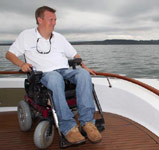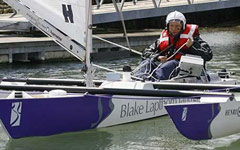JUGAR EN VERANO:
Y para esas noches de campamento, nada mejor que un juego nocturno, aquí les dejamos tres para empezar, que son súper divertidos y bien usados son actividades DURAS.
MATERIAL: Una linterna y una cuerda o piola para atar al prisionero.
AL ACECHO (STALKING)
MATERIAL: Una prenda y varias linternas.
DESARROLLO: Se divide el grupo en dos, unos serán los vigilantes, otros los cazadores. Se marca en el terreno un círculo o se delimita un espacio de por ejemplo dos metros de radio, se coloca la prenda en el centro y el juego consiste en introducirse en el círculo sin ser visto. Para ello deberán eludir a los vigilantes que irán rondando por los alrededores con una linterna y al descubrir a algún participante se le obligará a volver a la zona de comienzo o se le eliminará.
AL ACECHO (STALKING) CON GLOBOS
MATERIAL: Globos, linternas.
DESARROLLO: Se hacen dos equipos y se delimita un campo más o menos rectangular, al final de cada campo se coloca una hilera de globos (bien atados a una cuerda, colgados a un árbol, pared, etc.). El juego consiste en explotar los globos del equipo contrario antes de que te exploten los tuyos, pero pinchando sólo un globo por persona en cada incursión que hagan. Para ello deberán llegar al final del otro campo, encontrarlos y explotarlos. En la zona central se colocarán unos vigilantes o guardianes, que si ven a alguna persona intentando cruzar al otro campo, les mandarán que vuelvan otra vez a su propio campo y que lo vuelvan a intentar.
EL PRISIONERO
DESARROLLO: Un prisionero es atado fuertemente a un árbol del bosque por su guardián o guardianes, haciéndolo en un tiempo limitado, por ejemplo, cinco minutos. Atado el prisionero, el guardián se aleja unos diez pasos hasta encontrar un lugar cómodo desde donde vigilar a su cautivo. El árbitro dejará pasar unos momentos para que el prisionero pueda quejarse de lo incómodo que está y de lo apretadas que están las ligaduras. Una vez que el guardián haya revelado la clase de muerte que correrá el prisionero si sus amigos no logran libertarlo dentro de un cierto tiempo, ya que no hay esperanzas de que pueda desatar los nudos en la oscuridad, se impone un profundo silencio. El árbitro deja salir entonces de su escondite a los amigos del prisionero, uno por uno, para que vayan a libertarlo sin detenerse. Si el guardián ilumina de pleno al acechante, este queda eliminado. El número de veces que puede encender la linterna, es limitado. El guardián no podrá moverse de un sitio previsto. Es conveniente que haya un arbitro cerca del guardián para resolver posibles conflictos y controlar el número de veces que usa la linterna.
Gymkanas. Este tipo de juego reúne a muchos niños en un lugar que puede ser más amplio o más reducido. Las gymkanas pueden ser temáticas y aprovechar para disfrazar a los niños, también pueden ser culturales y pasar una tarde super divertida y provechosa.
Piñata de globos de agua. Una salida al campo o un jardín amplio es suficiente para que los niños pasen una jornada veraniega llena de risas y emoción jugando con una piñata de globos de agua. Así los niños se mantienen activos, se divierten y se refrescan del calor del verano.
Encestar pelotas. Este juego de verano requiere algunos cubos pequeños colgados de los árboles y pequeñas pelotas de goma para encestar desde cierta distancia. Se adapta a todas las edades dependiendo del tamaño de las pelotas y de la distancia.

